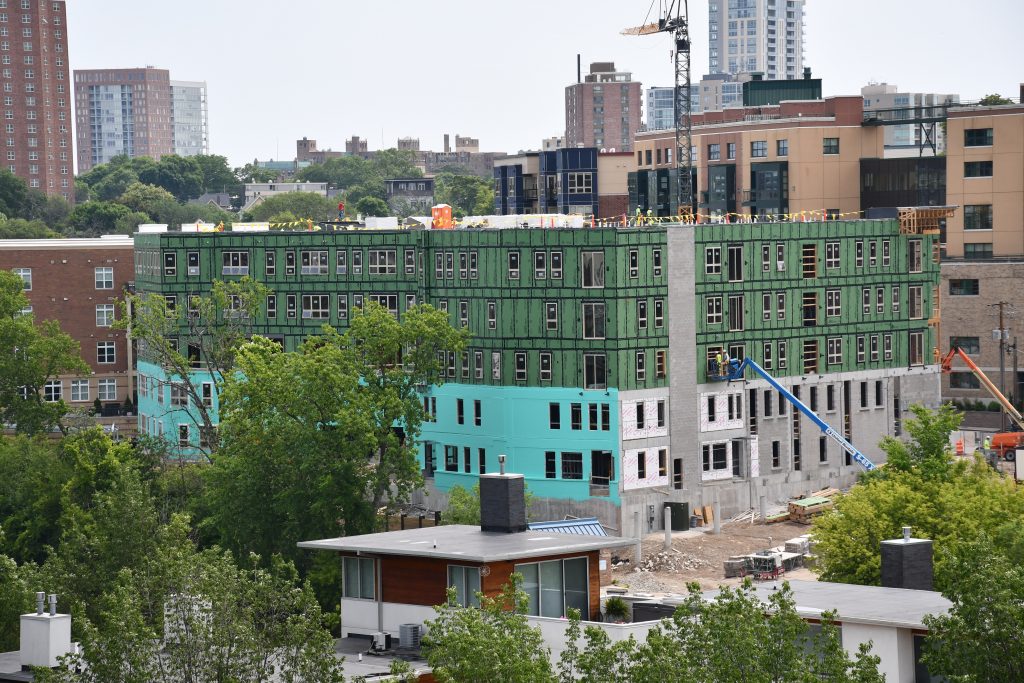State’s $475 Million Housing Program Didn’t Work, Now Legislators Are Trying To Fix It
Less than 4% of money allocated in 2023 has made its way to actual projects.

Milwaukee’s EIGHTEEN87 on Water apartments in June 2023. Photo by Jeramey Jannene.
In 2023, state lawmakers created three workforce housing programs they said would boost house construction around Wisconsin.
They didn’t work as well as legislators hoped.
Out of a total allocation of $475 million, only $16.4 million has made it to development projects to date.
“I had hoped by the time that we came back this year we’d have $100 million worth of this gone,” said Rep. David Armstrong, R-Rice Lake. He introduced the changes with co-author Sen. Romaine Quinn, R-Birchwood.
Now, a bipartisan group of legislators hopes to get more funds out the door by making changes to the programs. Those had a public hearing Thursday.
“I started working on fixes for it within a month of it passing,” Armstrong said.
The three existing programs are designed to help build infrastructure around new housing, convert former commercial spaces to housing and rehab Main Street second-floor apartments.
They do it by lending money to interested developers through the Wisconsin Housing and Economic Development Authority, or WHEDA.
If changes pass, WHEDA will be able to lend more per project. Developers would be able to use municipal subsidies and historic tax credits together with the loans. And a wider range of projects would be eligible for funding.
Out of the 44 legislators sponsoring the changes, 22 are Republicans and 22 are Democrats.
“I think this does it,” said Armstrong. “I’ve never had a meeting in Madison where everybody in the room agreed this needed to be done.”
Any unspent program money will return to the state’s general fund in 2031.
According to WHEDA’s website, it has extended loans to 18 projects under the three programs, and turned down eight applicants. The average loan size was about $900,000.
Original programs had shortfalls, builders and legislators say
The original program guidelines, including a bar on combining the loans with certain other financing, may have driven down interest from developers.
“I had one developer in Rice Lake that attempted to qualify for this, and all the problems of the bill were very evident right away,” said Armstrong.
One problem was that developers couldn’t combine state loans with tax-increment financing, or TIF, said Brad Boycks, who directs the Wisconsin Builders Association, an industry group.
TIF is a common municipal subsidy used for developments around the state. Developers can now use both WHEDA loans and TIF on a project.
“That’s an important one that, if changed, will open the door to people that may not have been looking at that in the past,” Boycks said.
The changes also allow business entities created by Wisconsin’s tribal nations to apply for WHEDA loans, and allow developers to use commercial conversion loans on smaller and mixed-use, projects.
They boost the percentage of project costs eligible for WHEDA loan financing to 33 percent for all three programs.
Legislators and industry groups agree that Wisconsin has a housing shortage. A 2023 report from the research arm of the Wisconsin Counties Association said the state needs to see at least 140,000 new housing units by 2030 to meet demand. Legislative efforts to address the shortage have been markedly bipartisan.
Bipartisan housing programs have little to show. Legislators are working on fixes. was originally published by Wisconsin Public Radio.
If you think stories like this are important, become a member of Urban Milwaukee and help support real, independent journalism. Plus you get some cool added benefits.




















